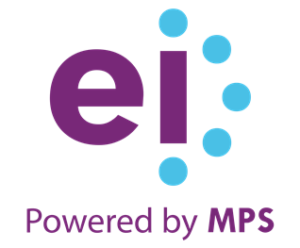How Immersive Learning Revolutionizes Experiential Learning
Immersive learning empowers skill-based organizations by providing realistic, interactive environments where employees can develop critical hands-on abilities. Through technologies like VR and simulations, learners practice real-world scenarios safely, accelerating skill acquisition and retention. This approach ensures a future-ready workforce, driving both personal and organizational growth.
Exploring The Synergy: Immersive Learning And Experiential Learning
Immersive learning accelerates right-skilling by merging technology-driven simulations with experiential learning. It creates realistic, risk-free environments where employees refine their skills through hands-on practice, adapting their strategies based on evolving scenarios. Tools like VR and AR, used by platforms such as Thrive and The Void, enable learners to retain critical knowledge and apply it effectively in real-world roles.
By integrating immersive learning with right-skilling initiatives, organizations can rapidly equip their workforce to meet changing industry demands, fostering agility, innovation, and enhanced performance in a competitive market.
Addressing The 4 Elements Of Experiential Learning With Immersive Learning
Typically, there are 4 elements of experiential learning: concrete experience, reflective observation, abstract conceptualization, and active experimentation.
Here, I outline how immersive learning can add value to each of these elements to make experiential learning more authentic.
1. Concrete Experience
The first stage of experiential learning focuses on practical, real-world experiences. Immersive platforms like Strivr, Virti, and Mursion bring this to life by creating realistic, interactive environments through simulations and virtual reality. These platforms allow learners to actively practice skills and apply knowledge in a safe, controlled setting. This direct engagement deepens understanding, enhances retention, and makes the experience more memorable, ultimately accelerating skill development.
2. Reflective Observation
At this stage, learners reflect on their experiences to gain insights and evaluate their actions. Platforms like CenarioVR, LearnBrite, and Vivid Learning Systems leverage immersive tools such as VR and interactive videos with replay and review features. These technologies enable learners to revisit their decisions from different perspectives, fostering a deeper understanding of outcomes. This reflective process helps identify areas for improvement, enhances critical thinking, and solidifies the comprehension of key concepts, driving more effective skill development.
3. Abstract Conceptualization
At this stage of experiential learning, learners begin forming general principles from their reflections and experiences. Platforms like zSpace, Talespin, and Engage enhance this process by offering immersive, scenario-based learning with instant feedback. These dynamic environments allow learners to engage with real-world challenges, identify patterns, and form new ideas. By bridging practical actions with theoretical concepts, immersive learning helps solidify understanding and fosters the ability to apply knowledge more effectively in various situations.
4. Active Experimentation
In the final stage of experiential learning, learners apply their newfound knowledge to various situations to evaluate outcomes. Platforms like BizSim, Kahoot!, and Unity Simulation Pro use immersive simulations and interactive scenarios to enhance this active experimentation. These tools provide a safe, controlled environment where learners can test ideas, iterate solutions, and refine their skills. This hands-on approach builds confidence and ensures effective application of new concepts in real-world scenarios.
8 Immersive Learning Strategies To Drive Experiential Learning
Adopting immersive learning strategies is essential for deepening experiential learning through hands-on practice, critical thinking, and ongoing feedback. Here are 8 effective strategies:
- Simulations – Create interactive learning environments that mimic real-world scenarios where learners can practice skills, enhance problem-solving and decision-making abilities, and apply knowledge in a risk-free setting.
- Gamification – Incorporate game elements like points, levels, and rewards to make learning more interactive and enjoyable, boost motivation, engage learners, and improve retention.
- Extended Reality (XR)/Augmented Reality (AR) – Integrate digital overlays into physical environments to provide immersive, hands-on experiences, enhance learning, and engage learners in dynamic and realistic simulations.
- Virtual Reality (VR) – Create a fully immersive environment, where learners can engage in lifelike situations, practice high-pressure scenarios and soft skills, and explore environments in ways that wouldn't be possible in the physical world.
- Interactive videos – Engage learners with narrative-driven content where they make decisions, answer questions, or explore alternative outcomes, thereby increasing engagement and promoting active learning.
- Adaptive learning platforms – Use AI-driven adaptive learning platforms such as Edcast, Docebo, Filtered, and Cognota, to personalize learning paths and experiences in real time by adapting content and pacing based on individual learners' needs and performance.
- Branching scenarios – Enable learners to explore the consequences of different outcomes based on their decisions in a safe environment, enhancing critical thinking and problem-solving skills.
- Story-based learning – Use immersive narratives to anchor learning in relatable, real-world contexts, enabling learners to connect emotionally with the content and better retain important ideas.
Use Cases Of Immersive Learning In Driving Experiential Learning
Immersive learning effectively drives experiential learning through virtual simulations for training in high-risk professions where real-world practice is challenging. Some use cases include:
- Diversity, equity, and inclusion (DEI) – Allowing learners to "walk in someone else's shoes" by providing realistic simulations that replicate different perspectives and experiences. As learners navigate situations from various viewpoints in a controlled, experiential setting, they gain empathy and a deeper understanding into the challenges and emotions that others face.
- Leadership development – Providing realistic simulations of leadership challenges, enabling leaders to practice decision making and explore various strategies in a risk-free environment. By experimenting with different leadership styles and tactics while receiving immediate, actionable feedback, leaders can refine their skills and build confidence in handling complex situations, while eliminating real-world consequences.
- Sales training – Engaging sales professionals in lifelike sales scenarios, enabling them to practice and refine their techniques, adapt strategies, and handle objections without the pressure of actual outcomes. This risk-free space for experimentation builds confidence and improves effectiveness in real sales situations.
- Compliance training – Offering interactive scenarios where learners can apply compliance knowledge in practical and realistic contexts. By converting abstract regulations into tangible, hands-on experiences, immersive learning enhances understanding and retention of complex rules and critical guidelines, while also making compliance training more engaging.
- Customer service training – Allowing customer service representatives to practice handling difficult customers in a realistic, yet safe environment. This hands-on approach helps refine communication and problem-solving skills, experiment with various conflict-resolution techniques, and build confidence to handle difficult situations with professionalism and poise in real-world scenarios.
Future Outlook and Trends
Immersive learning is set to revolutionize skill development by offering personalized, engaging experiences that enhance retention and application. Its potential to drive higher ROI makes it a leading choice for future learning strategies.
AI will drive the future of learning, with adaptive platforms tailoring content and support in real time to meet individual needs. These AI-driven systems will use data analytics to foster collaborative, social learning and create dynamic educational environments.
Technologies like AR and VR will further enhance immersive and experiential learning, offering more interactive and engaging experiences. Advanced data analytics and Machine Learning will analyze learner data to optimize performance and tailor experiences, providing deep insights into engagement and effectiveness. This data-driven approach will enable organizations to refine their training programs, boost learner success, and achieve better ROI.
Conclusion
Immersive learning is revolutionizing experiential learning by creating authentic, risk-free environments where learners can refine real-world skills. Utilizing AI, VR, AR, and adaptive technologies, it offers personalized, impactful experiences across domains like leadership and sales. Data analytics plays a crucial role, measuring effectiveness and guiding continuous improvement. The evolution of AI-driven platforms will further enhance interactive, collaborative learning, driving greater individual and organizational success in a dynamic, future-ready environment.


